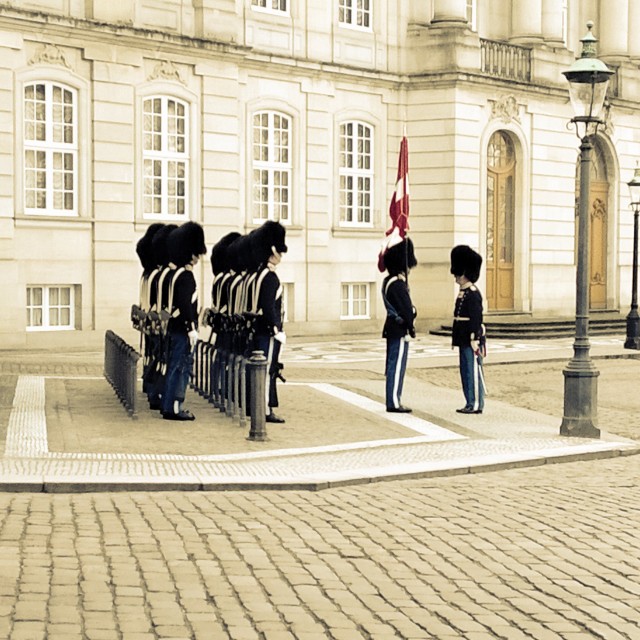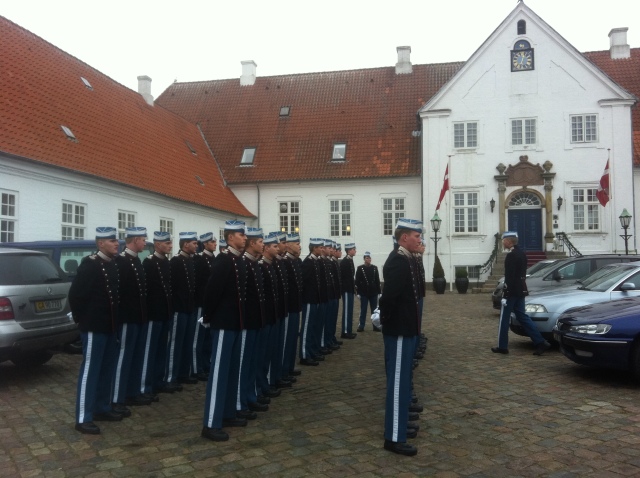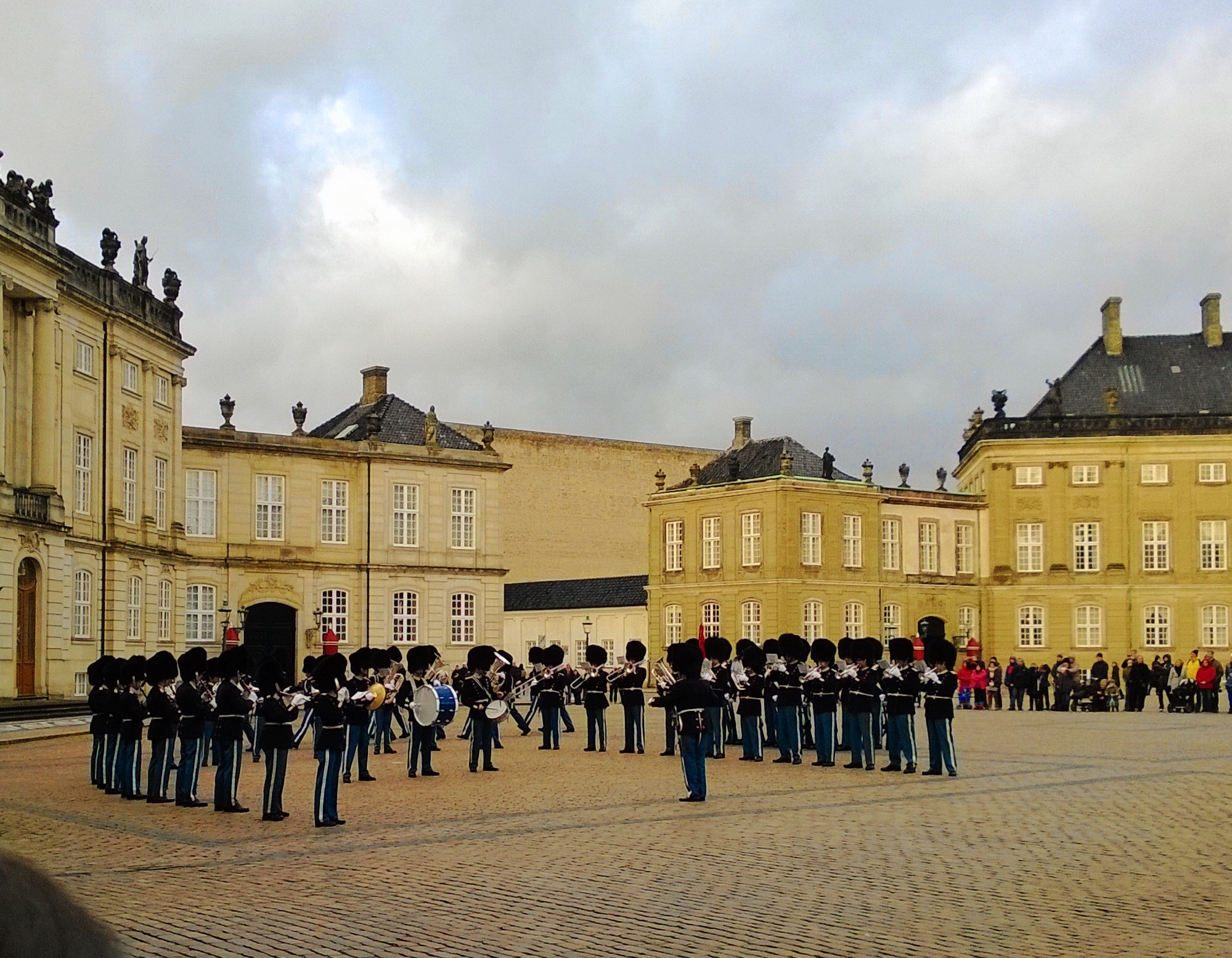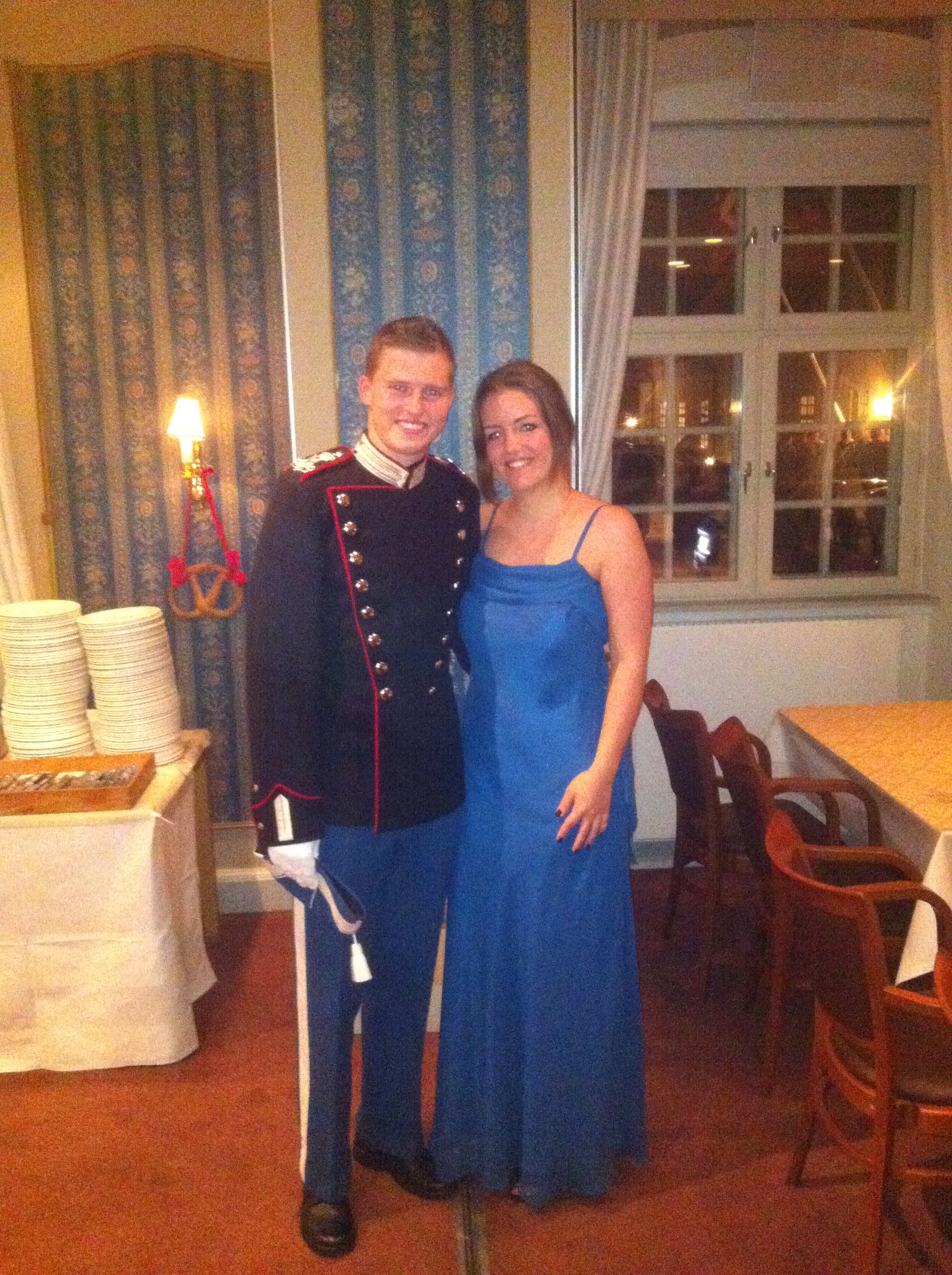When I get family and friends visiting, or when someone asks me for things to do and see in Copenhagen, I always suggest to catch the changing of the guards at Amalienborg Castle. I’m a fan of these kinds of things, royalty, pomp, ceremony, tradition. But I also think they are a landmark of Denmark and Copenhagen. Okay, I might be slightly biased because my Danish boyfriend used to be a “garder” himself! Boy, did he look handsome in that uniform…
The Royal Guard, or “Den Kongelige Livgarde” in Danish, looks back on a rich history. The guard was founded in 1658 by King Frederik III., who didn’t think the peace treaty of Roskilde with the Swedish would last, and thus felt in need of a guard. The Royal Guard today serves two purposes: it is an infantery combat unit, which regularly sends soldiers to international operations, such as Afghanistan. And it is a ceremonial unit that guards the royal family and their castles, providing permanent guard at Amalienborg Castle, Kastellet, Rosenborg Castle, and Fredensborg Castle, among others.

It used to be possible to get drafted into the guard during the standard military draft in Denmark. But with the ever-increasing number of volunteers (such as my boyfriend, that old patriot!), now the Royal Guard is mainly made up of soldiers who volunteered for the role. The service in the Royal Guard takes eight months. The training consists of three months of basic military training (complete with sleeping in the woods and all), followed by a month of learning the elaborate marching routines, before the guards are put on a rotation schedule for the remaining four months of their service. During the guard rotation, they have 24-hour shifts, during which they will stand guard for two hours and rest for four hours.

Garder waiting to commence the ceremonial march at Blå Fest
The four months of basic and marching training culminate in a big event called “Blå Fest” (blue fest), during which the garder are allowed to ditch their camouflage and wear the blue ceremonial uniforms for the first time. It is traditionally held in the town of Horsens, and it soldiers can bring their girlfriends to the event - and it’s a big deal to be invited! Some guards, who don’t have girlfriends, will invite more or less random girls, or those they have a crush on, to spend a romantic weekend with a big gala dinner in uniform and evening gown. The guys are also taught some rules of etiquette, like pulling back the lady’s chair and accompanying her to the restroom. Now, my boyfriend was already past his bachelor studies when he entered the guard, but the standard is to do the military service right after school, so those boys are all about 18 years old and it’s adorable to see them “play grown-ups”. One guy even proposed to his girlfriend during the dinner!
Now, in a very rare moment, I will share with you the portrait we took at Blå Fest (the official one is less grainy, this was taken with my iPhone). Isn’t there just something about a guy in a uniform? Swoon!
Finally, here are some more facts about the Livgarde, which you might not know:
- The last time shots were fired at Amalienborg was during the German invasion in World War II., where two garder were killed.
- After every four month service rotation, the guard that has been the “best comrade” to his fellow guards receives a golden watch from the Queen herself, which is engraved with her seal (since my boyfriend had an office job scheduling the shifts, he was once actually in the same room as the Queen - I’m soooo starstruck by proxy!)
- Guards are told that in the event that they have to fire a warning shot in the air (which never actually happens), they should point their gun towards Sweden - this might be due to the century-long sibling-like rivalry, or maybe just because that way, the bullet will most likely end in the water.
- Each bearskin is made from the fur of an entire bear, and they are super heavy.
- The Royal Guard’s motto is “Pro Rege et Grege” - for the king and the people.
- The uniforms include sabres, some of which were acquired as spoils of war from the Napoleonic Wars, but today, most of them are replicas.
Now you want to catch one of those changing of the guards ceremonies, don’t you? They are free and they are super popular, especially with tourists and kids. When members of the Royal Family are home at Amalienborg Castle, the Royal Guard will march from their quarters at Rosenborg Slot around 11:30 every day, accompanied by the music corps. They march up Købmagergade and Strøget and pass Kongens Nytorv, before arriving at Amalienborg a few minutes before 12. What follows is an elaborate choreography in which every single guard around the four palaces is replaced. There are three different types of changing ceremonies: the small Palævagt (only 12 guards and no music corps), Løjtnantvagt, and the largest, Kongevagt, when the Queen is home. The schedule can be found here.


